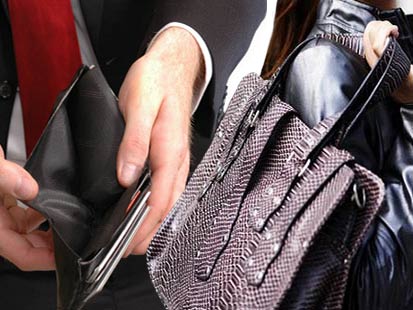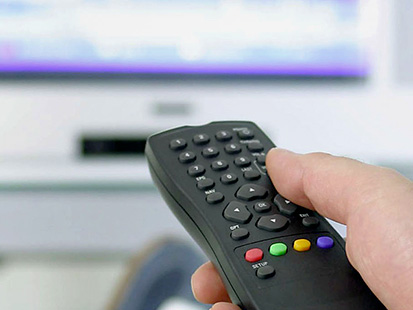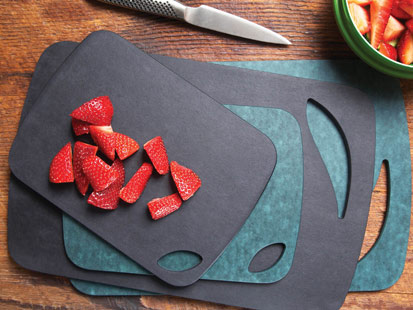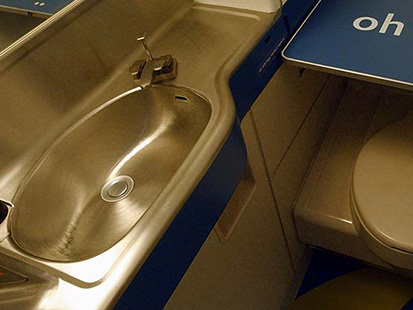Experts Tell Where Cold and Flu Viruses and Other Germs Lurk
Many surfaces and objects you come in contact with every day are covered in germs -- but then again, so are you."Ninety percent of you is composed of germ cells," said Philip Tierno, director of clinical microbiology and immunology at NYU and author of "The Secret Life of Germs."
He explained that while we are constantly in contact with germs, only a small minority will cause any harm.
"Of the 60,000 types of germs that people come in contact with on a daily basis ... only about 1 [percent] to 2 percent are potentially dangerous to normal people with normal immunity," he said.
That works out well for us, because pretty much any surface contains some of these microscopic organisms.
"There's very few surfaces that are truly clean," said Dr. Aaron Glatt, president and CEO of New Island Hospital in Bethpage, N.Y., and a spokesman for the Infectious Disease Society of America. "You're almost never going to culture something and not find some germs on it."
With that in mind, there is a simple activity that anyone can engage in to stay as safe as possible from surface germs.
"People should know that washing their hands is the single most important mechanism we have to prevent infection," said Glatt.
While he stressed that "the optimal goal is to practice good personal hygiene, good household hygiene and good food hygiene," Tierno also noted the importance of clean hands.
"You don't need to live in a bubble ... but you do need to be aware," he said. "You can touch surfaces, but just clean up before you eat or drink or before you touch your face."
"If you wash your hands prior to touching your face or prior to eating or drinking, which should be the norm, you cut your risk to virtually nil."
Purses and Wallets
Although they serve similar functions for women and men, purses and wallets are germy for entirely different reasons.
"It behooves you not to put your purse on the floor or outside ground if you can help it," said Tierno.

But many women don't follow that bit of advice, so their purses pick up the bacteria from wherever they're placed -- from the soiled ground to the bathroom floor.
While some might be willing to put it there because they think the floors are cleaned regularly and thoroughly, that isn't always the case.
"The way these places are cleaned is not ideal all the time," said Tierno.
Instead, he recommends putting your purse on a bench or a seat.
Wallets, meanwhile, pick up a lot of bacteria from what goes into them.
"Men's wallets were pretty bad on the inside," said Charles Gerba, a professor of microbiology at the University of Arizona whose work has earned him the nickname "Dr. Germ."
Paper currency has a way of getting around, from germ-filled hand to germ-filled hand. It picks up germs, viruses and often trace amounts of illegal drugs -- that's not just an urban legend; several studies have confirmed that a majority of U.S. currency contains trace amounts of cocaine. And of course, all of that ends up in your wallet.
Because men keep wallets in their pockets, the wallet is close to body temperature -- an ideal temperature for bacteria to breed.
"When handling the contents of your wallet, after it, wash your hands," said Tierno.
The problem isn't as bad with coins, largely because the metals -- particularly nickel -- often kill many of the bacteria.
Remote Control
The next time you sit down for a late-night movie at home, you may want to keep your hand out of the popcorn bowl if you've been handling the remote.
People are constantly handling their remote controls -- and, as Gerba points out, nobody ever disinfects them.

No wonder, then, that it is often the dirtiest object in a hotel room.
Tierno recommends wiping it down at least once a week, and more often if someone who is sick handles it.
Gerba points out that sickness will make the remote even worse, because people who have a cold or the flu tend to "jump in bed with the remote control and contaminate it."
Laundry Machines
The Laundromat is hardly a bower of cleanliness, but even laundry done at home is rife with germs.
There is about 0.1 gram of fecal material in a piece of underwear, Gerba said. That amounts to approximately 100 million E. coli bacteria in an average undergarment load.

Unfortunately, only 5 percent of people use very hot water to wash their clothes and then dry them for a full 45 minutes, a process Gerba said would kill more bacteria. Skipping these steps means that transferring wet clothing into a dryer leaves a film of germs all over your hands.
To minimize exposure to harmful bacteria, Gerba recommends doing laundry that requires bleach as a first load to disinfect the machines and saving undergarments for a final load. He also cautions against using the same sorting tables for clean and dirty laundry since the E. coli from the dirty clothes will transfer to the table and then back onto your freshly laundered clothes.
"Your clothes are a lot germier than they were 50 years ago," Gerba said. "Never kiss anyone who has just done laundry for you."
Cutting Board
You may be better off preparing your food on another surface.
According to Gerba, there are 200 times more fecal bacteria on a cutting board than a toilet seat.

The reason, he explained, is that many people rinse off their cutting board rather than thoroughly washing it.
"You have potential pathogens when you're dealing with food," said Tierno.
He recommended preparing a solution of a quart of water and "a jigger of bleach" and then wiping down food preparation surfaces before making anything on those areas of the kitchen.
Your Phone
The telephone provides a convenient meeting place for two different sources of germs -- your hands and your mouth.
After all, as Tierno, pointed out, "People are the source of most of the germs."

These germs are not just from your hands, but sources like your saliva as well -- which is why the mouthpiece is often even dirtier than the handle.
And again, it's not a device people clean too often, which is why both land lines and mobile phones present a problem.
A study done in Israel last year showed that 20 percent of hospital workers' cell phones had some form of harmful bacteria on them.
Water Fountains
The moist surface area on the average water fountain is an ideal breeding ground for bacteria and viruses.
"Everybody who has a cold or diarrhea has to drink a lot of water," Gerba said. "The sick people hang around here."

In fact, research has shown that water fountain spigots often have twice the amount of bacteria as a toilet seat, more than 2,000 microbes on a water fountain compared to less than 1,000 microbes on an average toilet seat.
"I'd go back to the bottle of water," Gerba said.
Buttons
These innocuous-looking offenders are difficult to avoid, which is part of the reason why push buttons can be crawling with germs.
Further, ubiquitous buttons, found on ATMs, elevators, telephones and drink machines, among other things, are located in areas that are not often cleaned and disinfected to kill bacteria and viruses.

Gerba noted that the first-floor buttons in elevators were the dirtiest.
"Everyone needs to go to the first floor," he said.
Worse, these germs get transferred to the body part that comes in contact with faces the most -- fingers and hands.
While avoiding these types of buttons can be almost impossible, Gerba does have a few recommendations.
"Knuckle it or wait for someone else to push it for you."
Yoga Mats
Sweating it out with a yoga session can be a great way to cleanse the mind and body, but forget to cleanse your mat, especially a communal one, and all that work may have been for nothing.
Sweat and microbes can cover an exercise mat during a workout. This may not be a problem if the mat was cleaned and disinfected before and after each use and laundered sporadically. But if the mats are not cleaned, germs can linger for days.

According to a 2006 article in The New York Times, gyms and yoga studios vary in terms of how often and how well they clean their mats. Some put the onus on patrons by providing disinfecting wipes.
And while thin booties and gloves are sometimes marketed as no-slip yoga accessories, they serve well to protect feet and hands from germ-ridden mats.
For any gym activity, Gerba recommends wiping equipment and hands frequently with gel sanitizers containing alcohol or other disinfecting agent.
Airplane Bathroom
"These are probably the worst," Gerba said. "They are the germiest restrooms you'll run across."
But bathrooms in general are not as germ-ridden as other areas -- a kitchen sink or laundry machine, for example. Compared to several items on this list, toilets are a beacon of cleanliness because they are cleaned and disinfected on a regular basis, even public toilets.

Airplane bathrooms get cleaned, but the high volume of people they must cater to in a short amount of time leaves them very dirty very quickly.
Gerba said a normal aircraft has one bathroom per 50 people. Discount airlines have one bathroom per 75 people.
"There is a thin layer of E. coli over the sink," and other surfaces, Gerba said, adding that many people, especially men, will not wash their hands effectively because the sink is small, and dirty hands transfer germs to the face easily.
Interestingly, the cleanest toilets are probably those in public areas of a hospital, Gerba said.
"In a city, I'd pull into the emergency room."
Shopping Carts
An individual probably has a fairly short interaction with the shopping cart at the local grocery store. Unfortunately, that interaction covers all the danger zones for contamination: hands, faces and food.
In one study done by his group, Gerba said he found E. coli on almost half the shopping carts the group tested. These are the microbes and pathogens that are transferred from the cart to your hands, to the food you select and then to the face if the hands touch it.

In addition, children often sit in the seat provided in larger shopping carts, adding to the germ load on the cart.
"That's putting a kid's butt where you put your broccoli," Gerba said.
A shopping cart is a good example of an item where a quick wipe down with a disinfecting wipe and some alcoholic hand sanitizing gel recommended by the Centers for Disease Control and Prevention can prevent a lot of cross-contamination.
Found this Post interesting? Discover more Curious Reads.[source]




